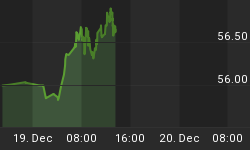Despite being proactive participants, we try and guard against tempting the market in serving us a few torrents of retribution in attempting to remain a few steps ahead of the curve. While we work with a degree of confidence built through experience, we recognize that our methodologies are far from infallible and always subject to the original sins of cognition. With that said, we like thinking - it works for us - and couldn't help but smirk after reading that the domino consensus on Wall Street has finally come around to a perspective we have long exploited in the market over the past two years.

After suffering heaving losses in the precious metals sector and the broad commodity-scape over the first quarter, Wall Street is starting to throw the towel in on commodity sector - almost two years after the break.
- The commodity super cycle: Citi declares it has come to an end - Platts 4/13/2013
- UBS Says Commodity Supercycle "Probably" Over - Bloomberg 4/3/2013
While bordering on schadenfreude, we are taking a victory lap as a method example of our own market approach. At our core, we are logically driven participants. We build perspectives based on the belief that although the markets on a day-to-day basis may flutter with all the uniqueness of a random walk, over a broader timeframe will conform to a collective market psychology that travels a rather defined behavioral continuum - irrationality being included. We apply a natural systems philosophy and differentiate free-will expressions from the conformity and strength of the driving herd and fauna. As students of market history, we attempt to identify where a market is in its respective cycle, then based on its momentum and structural signatures use prior comparative trends to build a roadmap forward. It is on one hand a top down common sense approach - that through our technical framework can add another dimension of depth and color. Needless to say - and semantically and profitably served - we strongly feel market histories rhyme, repeat and reincarnate themselves.
Back at the end of April 2011, our contrarian heart strings were pulled strongly with the converging technical and psychological profiles of the downtrodden US dollar. This eventually led us to believe that the dollar was ready to materially strengthen and the commodity markets were at a crucial pivot - led by the parabolic blowoff in silver (see Taking Shelter).
This perspective was also buttressed by strong empirical evidence that Wall Street had firmly embraced the commodity theme - despite all anecdotal evidence pointing towards an over-saturation of confidence in performance and various market structures within the sector that were non-sustainable and exhaustive. The following thoughts were presented in a quick note at the beginning of May 2011, titled Fade the Institutions.
Dollar willing, one scenario that appears ever more likely to gain traction over the coming weeks is a break in the macro commodity trade. And while it is a key ingredient to my longer term bullish perspective towards equities, it will likely have an intermediate term disruptive effect to market equilibrium and liquidity.
As everyone is well aware of by now, the hot money sector over the past ten years has been in commodities. Just last month commodities beat stocks, bonds and the dollar for a fifth straight month - the longest such stretch in the last 14 years.
"Commodity investments stood at $376 billion as of Dec. 31, 2010, up from $270 billion the year before, helped by net inflows of $62 billion, the report said. While those net inflows were down from a record $72 billion the year before, institutional investors accounted for an ever-greater portion of the total as the year progressed -- with a record $8 billion in December alone, according to the report. For the year, Barclays' analysts estimated net institutional inflows of almost $46 billion, or almost three quarters of the total inflows.
"The return of the institutional investor, massive inflows into precious metals led by the desire to hedge against financial market risk, and the gradual shift towards active management of commodity strategies were among the key stories of the year ," the Barclays report said." Pensions & Investments
(Reuters) - "Commodity funds drew the most new cash among nine tracked sectors in the fourth week of April as investors sought to counter effects of a weaker dollar and rising inflation, EPFR Global said on Friday.
Commodities funds took in $961 million in the week, putting them on track to exceed the record $32 billion of 2010, said EPFR, which tracks fund flows."
What is worth noting here is not just the magnitude of inflows - but the ever growing participation by institutions. While many traders would find a greater institutional participation as favorable to market conditions, I would strongly disagree with that logic. Institutional managers during market extremes are rarely doing what they personally would advocate. Because of the infusions of new money during rallies and redemptions during crashes, they are forced to invest or liquidate against their own best judgment.
In a sense they create the monster that eventually takes down the house.
Look no further than the institutional participation during the melt-up in equities in 2007. The retail investor/trader was basically a nonparticipant (net inflows), yet the market eventually collapsed upon the weight of the institutions.

O ver the past two years we have built on these perspectives, various guiding comparative frameworks to enter and exit these assets. And although we recognize the inherent limitations of scale of large institutional participation, we can't help but acknowledge that as late as they were in recognizing the artifacts of exuberance and exhaustion in the commodity sector - they once again have failed in detecting climate change had occurred some time ago. At the very least they are consistent, which from the perspective of a certain argumentative logic - is somewhat comforting to us.



















